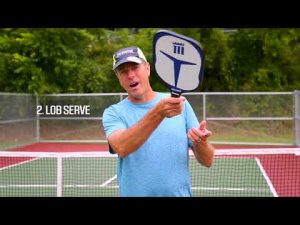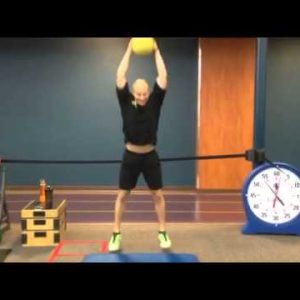[toggle title=’Click to show/hide spoiler’]
If you’ve heard of pickleball, you might be thinking that this is a game for seniors in a retirement community. It’s also possible you just think the name is strange. I really don’t blame you for thinking either of these things. The truth is though, if you are looking for an alternative to hitting the gym, this is a fast-growing sport that can substitute for a decent workout, this could be your answer. Pickleball can be fast-paced, and the players must change directions quickly. Sound better now? But before trying your hand, it might be a good idea to know the pickleball rules.
This will be your go-to post to cover all things pickleball rules, strategy, terminology and equipment.
This site contains affiliate links to products. We may receive a commission for purchases made through these links.
- What Is Pickleball?
- Basic Overview of Pickleball Rules
- Pickleball Terminology
- Scoring
- Rules for Pickleball
- Player Positions
- Pickleball Serve
- Pickleball Volley
- Non-Volley Zone
- Double-Bounce
- Fault
- Line Calls
- Equipment
- Obscure Rules
What Is Pickleball?
For anyone who is familiar with the game of tennis, pickleball rules and tennis will have many similarities. However, tennis is not the only overlap. You’ll find that badminton and even ping-pong have something in common with the game of pickleball.
The game itself was invented in 1965 near Seattle, Washington by three dads who wanted to give their kids a new activity during the summer months. Pickleball has now grown into a serious sport played internationally.
Basic Overview of Pickleball Rules
Pickleball can be played with either a singles or doubles format. When the ball is in play the object of the game is to hit the ball over the net to the opponent’s side and in-bounds. Generally, a “fault” by your opponent will result in a point for your team, but not in every situation. We will touch on why this is the case in a bit.
Pickleball Terminology
There is some basic pickleball terminology you will need to know to go along with the pickleball rules before you hit the courts for the first time.
Carry
When hitting the ball using the pickleball paddle, the ball must bounce away from the paddle immediately after impact. If the ball is “carried” along the front face of the paddle, this is called a carry.
Court
The playable area inside of the baselines and sidelines.
Dead Ball
When the ball is no longer in play.
Dink Shot
A shot that is hit softly and intended to land just inside the no-volley zone of the court.
Double Bounce
The ball bouncing twice on one side of the court before being returned.
Double Hit
The ball being hit twice on one side before being returned.
Fault
Any violation of the rules that results in a dead ball.
Let
A serve that is to be re-played. Normally a result of a serve hitting the net but still landing in bounds on the opposite court side.
Lob
A high shot that forces the opponent toward the baseline of the court to return.
Rally
When the ball is in play and returned to each side until a fault occurs to stop play.
Volley
During the course of play, any ball that is returned out of the air before it hits the ground.
Scoring
To win a pickleball game, you must score 11 points, while also leading by two points. Points can only be scored by the serving team. In doubles play, points can be scored by the serving team until a fault is committed by the serving team.
The serving team then changes to the “second server” until a fault is committed by the serving team again. The serve will then switch to the other team.
The team not serving will not be able to score any points until it is their turn to serve.
Typically, a pickleball match will consist of a best of three games. Other game/match formats include: one game to 15, or one game to 21. The winning team must win by two for any game played.
A point can be scored by the serving team when a fault is committed by the opponent. This can be from the ball not clearing the net or going out of bounds. There is also another rule called the “double-bounce” rule, that must be followed as well. If the double-bounce is not followed, a fault will occur.
Each time, before the serving motion has begun, the server must call out the score. For a doubles match, the score call sequence is: serving team score, receiving team score and the server number (one or two).
Rules for Pickleball
A pickleball match can be played as either doubles or singles. The pickleball court itself is 20 feet wide by 44 feet long. The area directly in front of the net is called a “non-volley zone” which runs the width of the court and is 7 feet deep. The non-volley zone exists on both sides of the net.
Player Positions
When you are the serving team and playing doubles, both players will be standing behind the baseline when the ball is served. The receiving team will have the player receiving the serve (diagonal) standing back ready to return. The other player on the receiving side, will be positioned up, just behind the non-volley zone line.

Pickleball Serve
Before serving the ball, the server should call the score. The correct way to call the score is:
Server score
opponent score
server number (1 or 2)
To begin the game, the server number will be 2. The correct call to begin the game will be 0-0-2.
The reason for this is to minimize the advantage of being the first serve to start the game, since only points can be scored by the serving team when a fault is committed by the receiving team. When the first fault is committed, the serve will change sides.
During the normal course of a doubles game, the serving team use one server until a fault is committed by the serving team, after which the second server will then take their turn. After a second fault is committed by the serving team, the serve will switch sides to the opponent.
The serve must be an underhand stroke, and the ball must not be struck above the waist of the player. The server will then hit the ball past the non-volley zone to the diagonal side of the court.
For a deeper understanding of a pickleball serve, below is a quick instructional video.

Pickleball Volley
If you remember from the pickleball terminology above, a volley is when the ball is hit out of the air without bouncing first. The volley is a great way to score points and catch your opponent off-guard.
A volley can only be hit after two bounces. One from the serve and the other from the return of serve.
For a better understanding on strategies to implement when using a volley, check out this post on Pickleball Volley Strategy.
Non-Volley Zone
The non-volley zone, can also be referred to sometimes as ‘”the kitchen”. Remember that the line of the non-volley zone is considered a part of the non-volley zone. So a player must be sure not to touch or cross any part of the line when hitting a volley. Even after using a volley, no part of the paddle or body can cross the line into the non-volley zone. Even if your momentum takes you across the line.
Double-Bounce
The double bounce rule, or the two bounce rule says that each team must play their shot only after the ball has bounced once. Once this requirement has been met, either team is allowed to volley. Granted they are not within the non-volley zone.
So for example, after a serve, the ball must bounce on the receiving side and returned. The. The serving side must let the ball bounce before a return. Now the double bounce rule has been met and either team can volley.
Fault
There are five common times when a fault can occur during the course of play:
- The ball does not go over the net
- Any time the ball goes out of bounds
- A volley is hit from the non-volley zone
- The double bounce rule is violated
- The ball does touches the non-volley zone (including the line) on the serve.
Line Calls
Line calls will generally be left to your team to call on your side of the court, unless there is a line judge present.
If any part of the ball hits the out of bounds area of the court, even if a part of the ball is touching the line, is still considered out of bounds and a fault.
Related: Medicine Ball Ab Workout: 9 Best Exercises For Maximum Core Strength
Equipment
Now that you know pickleball rules, you need the right equipment to play the game. Here is all the equipment you will need to get your game of pickleball started.
Weighted Pickleballs
Pickleball Set with Paddles
USAPA Pickleball Paddles
Portable Pickleball Net System
Obscure Rules
Pickleball also has some obscure rules that may only be in play during official games and tournaments. Casual players may not observe these rules, but they are still worth knowing.
The 10-Second Rule
As soon as the server calls the score, he or she only has 10 seconds to serve the ball. If more than 10 seconds elapses before the serve, a fault is called.
Another note to remember for the 10-second rule: the score must be called in its entirety before the serving motion begins.
Other Time Rules for Pickleball
A maximum of two minutes is allowed in between games. If 2 minutes is exceeded the judge may call the score and start the 10-second rule.
Injury Rule
If a player is injured during a rally, play is not to stop until there is a dead ball, regardless of the injury to the player.
Equipment Rule
A rally does not stop if any player breaks or loses a paddle.
Summary
Now that you know the rules for pickleball, you’re ready to get out there. If you want to learn a new sport, or find another way to stay in shape, pickleball might be worth giving a try.
[/toggle]
